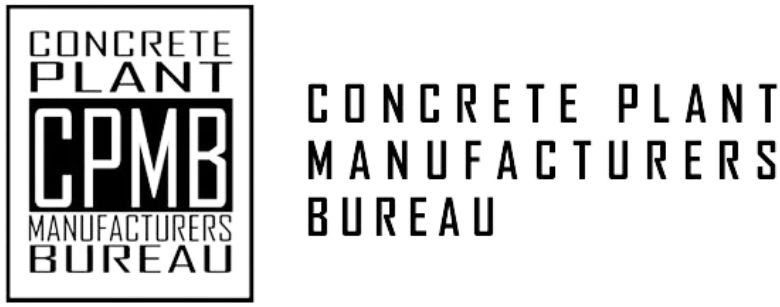CPMB… In the Beginning
Ever wonder how and why CPMB was started?

The Advent of the Dry Batch Plant
You may be wondering how the dry batch plant, that began the revolution in concrete pavement, was developed.
At about the same time the ready mixed industry began in 1913, the paving of concrete roads was just beginning to emerge. Machines and methods to batch and mix the materials used in concrete paving were just being developed.
In particular, a steam-powered concrete “paver” that mixed concrete on-site and moved with the other paving machines as the work progressed gained wide acceptance as the preferred method of producing concrete for pavement. The concrete “paver” preceded paving batch plants by several years. The means to mix the concrete materials was there, but how to best deliver the materials to the “paver” skip hoist was left up to the emerging batch plant industry.
At first, wheelbarrows were used to “batch” and load the paver’s skip hoist. Five-ton dump trucks would haul the sand and stone to the work site and dump the materials in piles along the roadside. Then the workmen would hand-shovel the materials into wheelbarrows that also served as volumetric measures needed to load the skip hoist for the two-bag (about 11 cubic feet) steam-powered concrete mixer (paver).
Bags of cement were also spaced along the roadside and hand-dumped into the skip hoist in proportion to the wheelbarrow loads and batch size. A water pipe was usually laid the entire length of the job with multiple outlets to provide water for the mix. It was a slow, back-breaking process, but it got the job done and produced many concrete roads of acceptable quality for the early lightweight cars and trucks.
The next step in batching for concrete pavement occurred in about 1920. The effort centered on reducing labor and eliminating the wheelbarrow. A mobile (steel wheels) belt conveyor arrangement was devised with three- or four-wheeled volumetric hoppers located over the belt. Materials continued to be piled along roadsides and workers continued to hand-shovel them into the volumetric hoppers, which could be moved alongside the piles.
After the hoppers were loaded, workers would start the conveyor and open the hopper gates to deliver and load the batch into the paver skip hoist. As the paver progressed, the belt conveyor would move along with it. Cement from bags was held the same way. You could say this was the earliest paving batch plant.
The next step was to eliminate the labor of hand-shoveling to achieve volumetric batching. In the early 1920s, the pioneer plant manufacturers started to build aggregate bins with batch gates and volumetric batchers. Clam shell buckets and cranes were used to load each bin compartment with sand and stone. Then, using hand-operated gates that fed separate volumetric batchers measured the proper materials and discharged the batch into a dump truck, which would then deliver the batch and dump it into the paver skip hoist.
Cement bags continued to be loaded by hand on top of the aggregate batch before or at the point of delivery into the skip hoist. Small single batch dump trucks were used to deliver the batches. By 1925 this was the accepted method used in concrete paving. It became so popular that it endured until the early 1960s when central mix and slip-form paving began taking over.
Between 1925 and 1960 there were significant improvements made in paving plants. Before 1930, volumetric batching had been replaced by weight batchers with beam of dial scales that proved to be much more accurate in proportioning the materials. By 1929 bulk cement entered the picture, which led to cement batching plants that stored and weighed the cement. This eliminated the need for the more labor-intensive use of bagged cement.
The paving plant after 1930 now consisted of separate two-stop aggregate and cement batching plants. Larger dump trucks able to carry up to four batches were inevitable and the plant manufacturers followed right along by building plants with multiple aggregate and cement batchers. At the peak of dry batch paving in the 1940s and 50s, plants were being used with four sets of batchers that could simultaneously load a four-batch dump truck in a single drop.
The limiting factor was the concrete paver, which had slowly grown from 11 cubic feet to the predominant 34E twin batch and triple batch pavers. And as the pavers grew in size so did the production of concrete paving, which has advanced from a few hundred feet per day to more than a mile per day in the late 1950s.
With the advent of central mix paving in the 1960s, precipitated by the huge interstate highway program, the production of pavers and dry batch paving plants ceased. Now many of the obsolete 34E paving mixers and dry batch plants were either scrapped or downgraded to building ramps, city streets or short rural paving jobs. By 1969, the age of dry batch paving had ceased to exist, but after a glorious 40-year reign, which produced innumerable early concrete roads across America, the concrete paver and the dry batch paving plant were the very foundation of the concrete paving industry.

